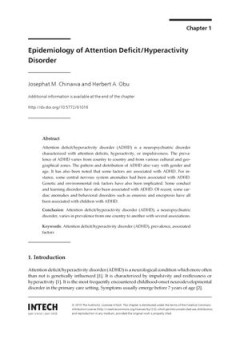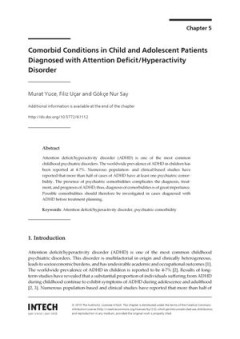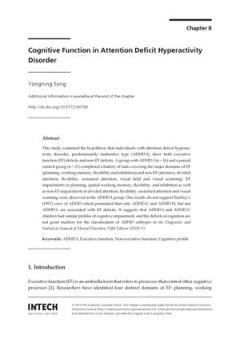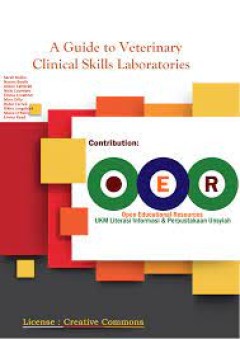Filter by

Evolution of a Disorder and Insights into Prevention of ADHD
Understanding the history of the development of diagnostic criteria for ADHD, the parallel growth of the ADHD drug market, and factors that improve the symptoms of ADHD provides insight into alternative approaches to treatment and the potential for prevention. This chapter sheds light on the rise of ADHD as a diagnostic disorder, and highlights the growth of the ADHD drug market and associated …
- Edition
- -
- ISBN/ISSN
- 9789535121664
- Collation
- -
- Series Title
- -
- Call Number
- -

Epidemiology of Attention Deficit/Hyperactivity Disorde
Attention deficit/hyperactivity disorder (ADHD) is a neuropsychiatric disorder characterized with attention deficits, hyperactivity, or impulsiveness. The prevalence of ADHD varies from country to country and from various cultural and geographical zones. The pattern and distribution of ADHD also vary with gender and age. It has also been noted that some factors are associated with ADHD. For ins…
- Edition
- -
- ISBN/ISSN
- 9789535121664
- Collation
- -
- Series Title
- -
- Call Number
- -

Comorbid Conditions in Child and Adolescent Patients Diagnosed with Attention…
Attention deficit/hyperactivity disorder (ADHD) is one of the most common childhood psychiatric disorders. The worldwide prevalence of ADHD in children has been reported at 4-7%. Numerous population- and clinical-based studies have reported that more than half of cases of ADHD have at least one psychiatric comorbidity. The presence of psychiatric comorbidities complicates the diagnosis, treatme…
- Edition
- -
- ISBN/ISSN
- 9789535121664
- Collation
- -
- Series Title
- -
- Call Number
- -

Cognitive Function in Attention Deficit Hyperactivity Disorder
This study examined the hypothesis that individuals with attention deficit hyperactivity disorder, predominantly inattentive type (ADHD-I), show both executive function (EF) deficits and non-EF deficits. A group with ADHD-I (n = 16) and a paired control group (n = 21) completed a battery of tasks covering the major domains of EF (planning, working memory, flexibility and inhibition) and non-EF …
- Edition
- -
- ISBN/ISSN
- 9789535121664
- Collation
- -
- Series Title
- -
- Call Number
- -

Assessment of ADHD Through Electroencephalographic Measures of Functional Con…
The main objective of the chapter is to review the types of electroencephalographic measures of functional connectivity that have been used so far in the study/diagnosis of ADHD. The review will include the methods and results so far reported in the literature as well as those conducted by our research group.
- Edition
- -
- ISBN/ISSN
- 9789535121664
- Collation
- -
- Series Title
- -
- Call Number
- -

A Guide to Veterinary Clinical Skills Laboratories
Clinical and practical skills are an essential part of the competences required of veterinary graduates (European Association of Establishments for Veterinary Education (EAEVE) 2014, Royal College of Veterinary Surgeons (RCVS) 2014 American Veterinary Medical Association (AVMA) 2014, North American Veterinary Medical Educators Consortium (NAVMEC) 2011) and clinical skills laboratories (CSLs) …
- Edition
- -
- ISBN/ISSN
- -
- Collation
- -
- Series Title
- -
- Call Number
- 636 GUI g

Creative Clinical Teaching In The Health Professions
This peer reviewed e-book is a must-read for nurses and other health professionals who strive to teach with creativity and excellence in clinical settings. Each chapter presents current evidence informed educational practice knowledge. Each topic is also presented with text boxes describing ‘Creative Strategies’ that clinical teachers from across Canada have successfully implemented. For th…
- Edition
- -
- ISBN/ISSN
- -
- Collation
- -
- Series Title
- -
- Call Number
- 610
 Computer Science, Information & General Works
Computer Science, Information & General Works  Philosophy & Psychology
Philosophy & Psychology  Religion
Religion  Social Sciences
Social Sciences  Language
Language  Pure Science
Pure Science  Applied Sciences
Applied Sciences  Art & Recreation
Art & Recreation  Literature
Literature  History & Geography
History & Geography